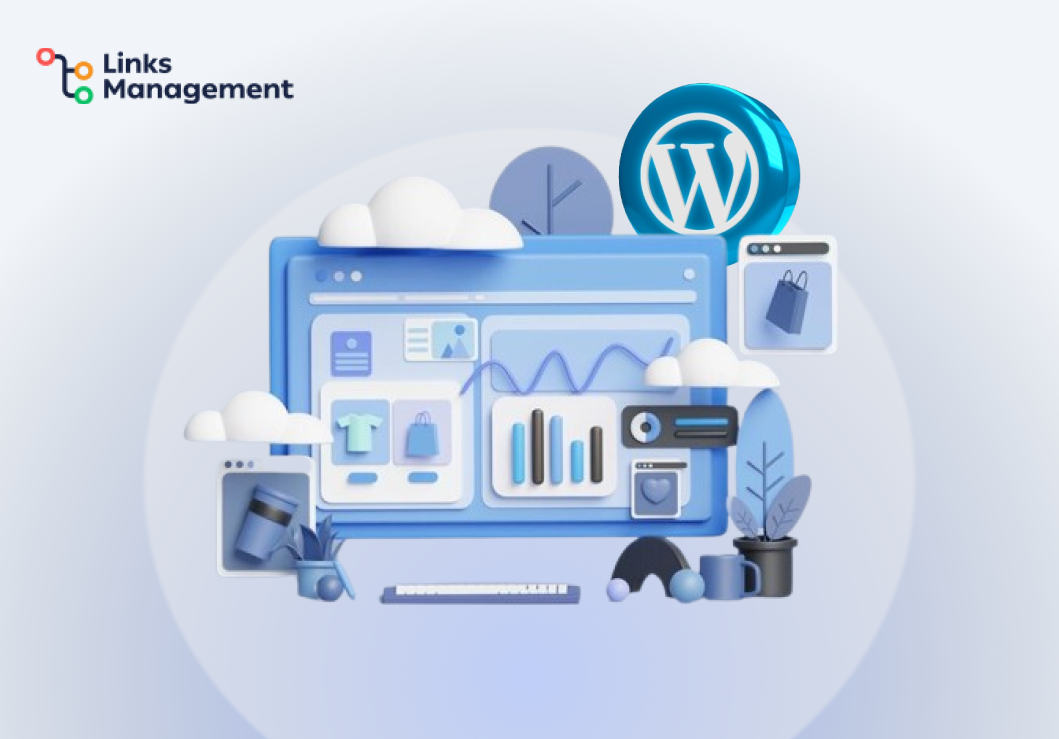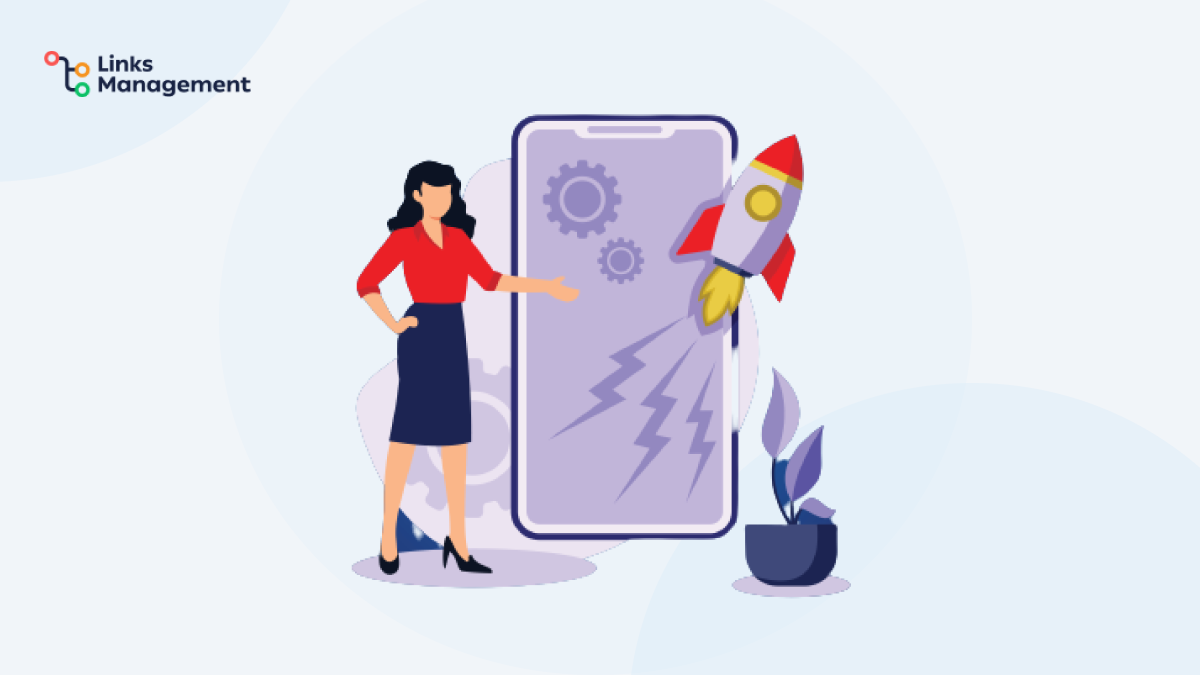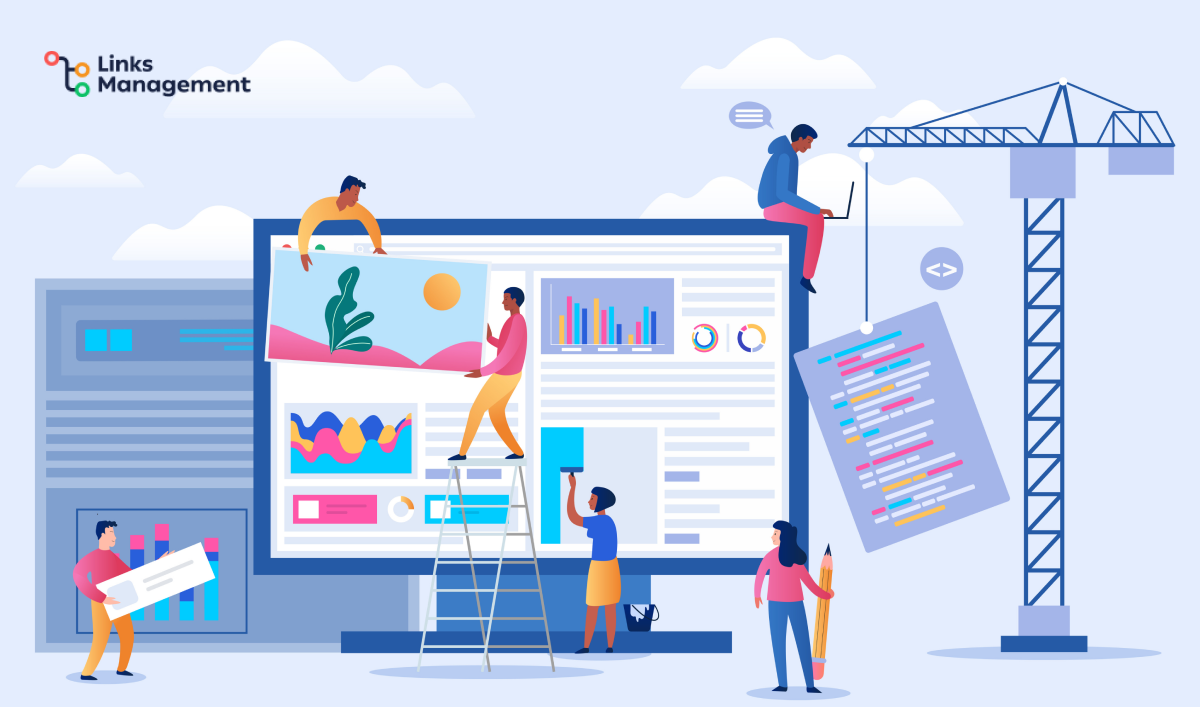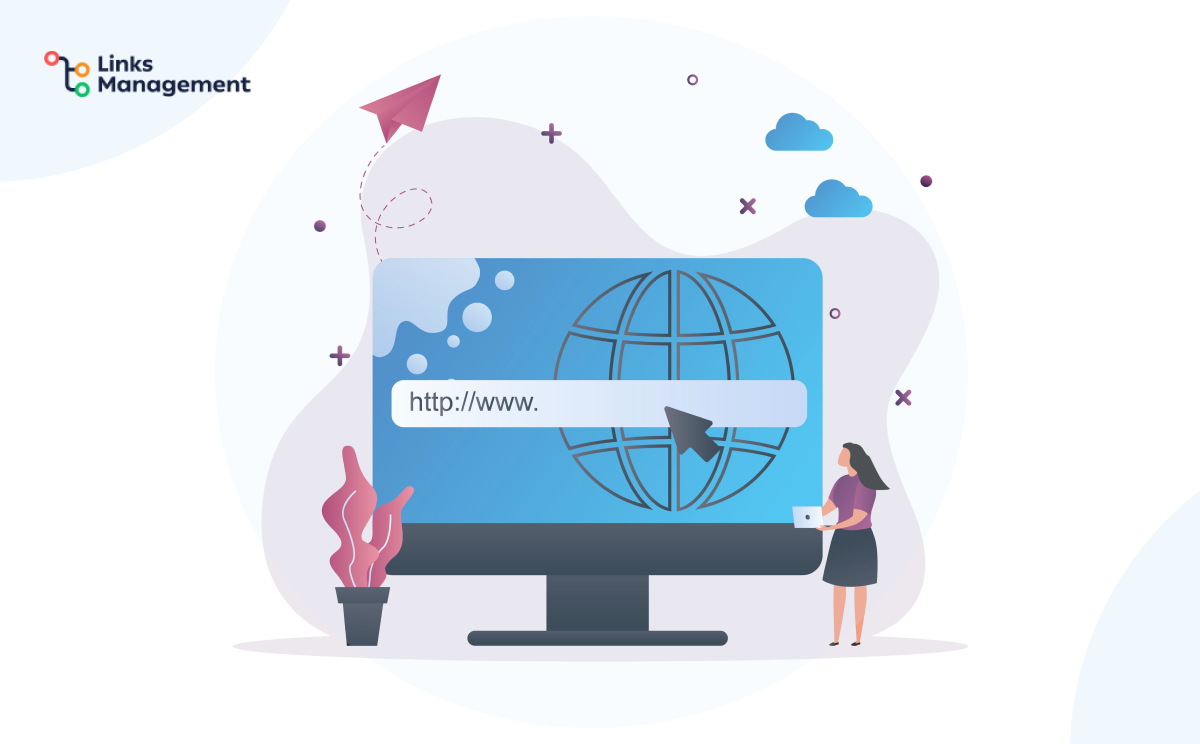WordPress SEO: How to Improve Your Rankings and Get More Organic Traffic
You need to take your SEO seriously if you want to get a good position in search engine rankings. Luckily, using WordPress gives you an advantage, as this CMS takes care of the basic SEO features from the start. This is one of the main reasons why people use WordPress the most.

However, you can still do several things to take your WordPress SEO to the next level. To make it easier for you, we have created a small guide with useful tips and pieces of advice. Below we have put together the best WordPress SEO tips and tricks for driving organic traffic to your website. By the way, lots of famous companies use these tips and other SEO services for WordPress.
Do Keyword Research
Keyword research can have a significant impact on your WordPress SEO strategy. It will allow you to:
- Create relevant content for your visitors.
- Build a better understanding of market needs.
- Track the success of everything you write about.
- Generate valuable website organic traffic.
There are many cool SEO tools for WordPress that can help you with the keyword research process. KWFinder, SEMRush, and even Google Keyword Planner are among the most well-known.
The main principles are as follows:
- Make a list of keywords relating to your topic.
- Enter them into the keyword search tool to identify the ones with the most traffic and the least competition.
- Research competitors by launching similar sites with keyword research tools to find which keywords bring them the most traffic.
- Determine which of these keywords has low enough competition for you to compete.
Optimize Your Website for Mobile Devices
Google recently announced that they had begun their mobile-first indexing tests. This suggests they’re starting to base rankings on the performance and usefulness of your mobile pages. Therefore, if you are using a non-responsive theme, now is the time to fix it.
But besides using a responsive theme, check how your site performs on mobile platforms. To do this, open Google’s test for the friendliness of your pages to mobile devices and enter your site’s address.
This will give you an understanding of how the mobile version of your site works and some tips on how to improve it. WordPress SEO optimization is one of the best ways to improve your website’s position in the search engine.
Speed Up Your Website
Website speed has always been important. A slow-loading site will negatively impact your rankings and user experience. Page load speed is already a ranking factor.

Luckily, fixing a slow-loading site isn’t difficult. The steps below will get you started:
Get a Base Number
First, you need to understand how your site actually works. Open a tool called GTMetrix and run your website through this tool. This will give you a breakdown of your current performance so you can see what you need to improve.
Update Your Host
Sometimes misconfiguration on the server side can cause sluggishness. This is why choosing the right web hosting environment is important. To improve the performance of your WordPress site, we recommend using a WordPress hosting package specially created to customize your site.
Use a CDN
A CDN speeds up your site by storing versions of your site on servers around the world. This way, visitors get the version closest to their physical location when they come to your site. You can integrate your site with a CDN like Cloudflare for a solid free solution.
Use a Caching Plugin
The caching plugin will generate static HTML files instead of PHP files that are normally required to run WordPress. This will minimize the number of requests between the server and your user’s browser, which will slow down the download speed.
Some of the more common WordPress caching plugins include W3 Total Cache and WP Super Cache. You can also use other WordPress SEO plugins.
Optimize Your Media
If you are uploading images to your site, they need to be properly optimized.
To optimize your images, do the following:
- Reduce the file size by running images with a tool like TinyPNG.
- Resize your images before uploading.
- Install an image optimization plugin like WP Smush.
Fix Broken Links
Having a lot of broken links is not good for your readers or your rankings. In addition, they make it harder for Google bots to crawl your site.
The easiest way to check your site for broken links is to open Google Search Console and click on Crawl Errors.
Then open each error, and it will show you where the broken link is so you can fix it.
Fix Broken Links
Having a lot of broken links is not good for your readers or your rankings. In addition, they make it harder for Google bots to crawl your site.
The easiest way to check your site for broken links is to open Google Search Console and click on Crawl Errors.
Then open each error, and it will show you where the broken link is so you can fix it.
Choose Keywords for Each Page
Although the way keywords are optimized has changed, they still play an important role in SEO. Whenever you write a post on your site, you must have a keyword for that particular post.
Here are some optimization guidelines for your chosen keyword:
- Don’t randomly insert a keyword into your post. Only include it when it’s natural.
- Include your keyword in the first paragraph of your post, if possible.
- Use the target keyword in the title and subtitles.
- Incorporate your goal term into the URL and meta description.
Create High-Quality Content
Google loves quality content. When you look at the top 10 results for any particular term, you will see that the content fits two criteria:
- Content is usually longer and has high standards.
- The content satisfies the search intent.
- Long, well-written content is great. But you may not know what a search term is. Essentially, the search intent is the intent behind the keyword.

When you create any content, you should examine what is currently ranking and try to understand why it is ranking. Sometimes content will only rank because of the domain. But if every site has the same amount of influence, then the content itself will be the differentiating factor.
To gain a better understanding of the keyword and what visitors are looking for, consider the following:
- Are they looking for information or content about a product?
- Are they looking for something in-depth? Or short?
- Why are current pages ranked?
- What style of content is best suited for the keyword?
You’ll be ready to create an epic piece of content with a better understanding of the keyword, the pages that rank well, and what the potential visitor wants.
Create Longer Content
Longer content is more likely to rank higher in search engines. Recent research by Buzzsumo and Moz has shown that longer content gets more social links and backlinks in general, which means higher rankings.
Another study found that most of the content that ranks on the first page of Google is over 2,000 words long. This doesn’t mean that every post on your site has to reach that length, but it should be what you’re aiming for. But this does not mean that you should fill your content with unnecessary words in order to fill in more text.
Instead, you should focus on the purpose of the keyword. That is, for what reason the user searches for this keyword in the first place. Then respond to that keyword request most thoroughly and helpfully, which in some cases may require writing less text.
Link to Quality Resources
Linking to high-quality sources won’t hurt your SEO. In fact, it can really help. When you link to high-quality official sources, you are telling Google that the related content is similar to yours. In addition, it enhances the user experience by providing readers with more information on a topic.
Keep your site from becoming a dead end on the internet. Sharing a link is a good thing. Link to useful sources regularly, as this will help increase your own credibility and credibility.
You know bonding is important, but you also want to do it right. To avoid sending readers away from your site, it’s a good idea to open all external links in a new window. To do this, follow these steps:
Create a Hyperlink
To create a hyperlink, select text and click the hyperlink button. Then click on the gear icon to open your link options.
Change Link Options
A text box will appear, and then select the box labeled Open in a new tab. Now when a user clicks on a link, it opens in a new tab instead of being redirected away from your site.
Do Content Relinking
Whenever you have a chance, you should link to older content that you have posted. Regular internal linking can bring you the following benefits:
- Easier crawling of your site for Google bots and deeper access to pages and posts.
- Sending link mass to other blog posts and pages that may not attract links on their own.
- Helping Google understand the context of your page content with hyperlinks.
- Keep visitors on your site longer so that they visit more pages, thereby reducing the bounce rate and increasing the time spent on the site.
WordPress makes it easy to link your content together.
Optimize Your Post and Page Titles
Your title tag is your most important tag. It tells Google what your page is about and influences whether readers will click through to your site. If you’re not sure which tag is your title tag, it’s the title of your post or page.
Follow these guidelines for optimizing your title tag:
- Include your target keyword as early as possible in the title.
- Create a title tag between 60 and 70 characters.
- Create an enticing title that will entice people to click on the link.
Use Shorter URLs
When it comes to your URLs, the shorter, the better, do your best to shorten your URLs, so they don’t show multiple categories or directories. Try to include only the target keyword and get rid of everything else.

A long URL won’t break your rankings. But it can make your link look like a spam link and lower your click-through rate. If you’ve changed your permalinks, this will give you more control over the URL structure.
Follow these guidelines when creating an SEO-friendly URL:
- Use a shorter URL whenever possible and cut out filler words.
- Include your target keyword in your URL.
- Match your titles and URLs exactly.
- Make it human readable.
- Avoid multiple categories and folders whenever possible.
With that in mind, you can easily edit your URLs from WordPress itself. On the post creation page or page, simply click Edit in the “Permalink” section right below the title.
Optimize images for search engines
Using images in your content will provide a higher quality reading experience. This will help your users interact with your site, which will give positive site performance indicators. But besides adding images to your site, you can also optimize them to improve SEO.
There are three components to proper image optimization:
Image Title Text
The image title text is not crawled by search engines but may affect your user experience. When a user hovers over your image, a popup will appear with your image’s title text.
To change the title text of an image, go to the post editor where you placed the image.
Hover your mouse over the image and click on the pencil icon, and the “Edit” option will appear. In the “Advanced Settings” menu, you can enter a name for the image.
Alternative Text
Your image’s alt text will tell Google what your page is about. You should change the alt text to the post’s focus keyword on the first image in your post. For other images, use keywords that are variants of the target keyword or describe the image.
To change the image and text, go to the visual editor and hover over the inserted image. Once again, click on the pencil icon, which will bring up the “Edit” option. Details of your image will appear in a popup window. Look for a box called “Alt Text” and enter a keyword or related keyword in that box.
File Name
Your image filename can help your image rank higher in Google Image Search, which can bring additional traffic to your site.
Most of the default image filenames are long and confusing; they’re off-topic. Before uploading an image to WordPress, you should consider the image’s purpose and the keyword you are targeting. Then include this keyword and other descriptive phrases in your image filename.
Also, if you use multiple words in a filename, make sure you use a hyphen between them, as Google will read those hyphens as a space.
Conclusion
As you can see, there are many things you need to consider when optimizing your site for search engines. We hope this article has been helpful in giving you a great start to start optimizing your website.
Finally, remember that SEO is a long-term game. The more effort you put into SEO, the more results you will see, but these results usually only come after a while.
Enter URL & See What We Can Do Submit the form to get a detailed report, based on the comprehensive seo analysis.





